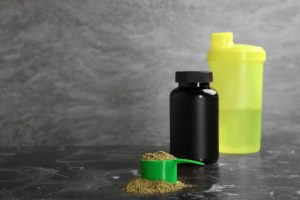The hemp flower is changing things around the world as countries and states in the US consider legalizing the medicinal and recreational use of cannabis, a derivative of the flower. Even so, the flower itself serves several legally permitted purposes dating back centuries from its use in the production of clothing to rope, medicine, and even fuel. The hemp flower continues to be used in a variety of ways and one of the most recent iterations of the plant is hemp flour. Let’s take a look at this interesting ingredient and some of the nutritional benefits it may offer cookers and bakers across the country.
What Is Hemp?
Hemp is a variety of Cannabis sativa L, an industrial plant strain that has been used for over 10,000 years for its ability to be utilized in several significant ways. The hemp plant produces fibers that can be used to make materials, seeds that offer protein, leaves that can be diffused into oils, and buds which are more commonly known for their use in smoking. The entire hemp plant can be used and is typically divided into these four categories:
- Bast fibers
- Hurds or shives
- Leaves and flowers
- Seeds
Hemp is a plant strain that produces cannabinoids like tetrahydrocannabinol (THC), the intoxicating chemical that has been subject to legislation over the years. However, the hemp plant does not contain enough THC to cause intoxicating effects if ingested. This differentiation distinguishes hemp from marijuana. Hemp is more commonly used in the production of the non-intoxicating cannabinoid named cannabidiol (CBD), a chemical that is said to offer several health benefits to those who consume it through oils.
What Is Hemp Flour?
Hemp flour is a byproduct of the seeds in hemp plants. The seeds are first cold-pressed to extract oils that would otherwise result in the formation of hemp butter when milled. A healthy dose of hemp oil is produced during the press and used at a later stage in hemp flour production. After the oil has been pressed from the hemp seeds, what is known as hemp cake is left behind. This cake is then gently turned and milled into nutrient-rich hemp flour.
The Difference Between Hemp Protein And Hemp Flour
 Hemp flour differs from hemp protein, a compound that some bakers and consumers may already be familiar with. Hemp protein requires an extra step in hemp flour processing, whereby the flour passes through micron filters to create protein molecules. The process causes the hemp flour to lose a lot of fiber, however, what’s left behind possesses a rich dose of protein.
Hemp flour differs from hemp protein, a compound that some bakers and consumers may already be familiar with. Hemp protein requires an extra step in hemp flour processing, whereby the flour passes through micron filters to create protein molecules. The process causes the hemp flour to lose a lot of fiber, however, what’s left behind possesses a rich dose of protein.
While the two are similar, hemp flour contains higher quantities of fiber which makes it an ideal baking substitute. Hemp protein, on the other hand, is more suited to a post-workout meal plan for its rich content of protein which supports rapid lean muscle growth. At the end of the day, the choice comes down to what you plan on using the product for and bakers may be delighted to use this natural flour substitute for their kitchen creations.
Hemp Flour Nutritional Information
Beyond a high content of fiber, hemp flour boasts several additional nutrients we have outlined below:
- Omega-3/Omega-6 essential fatty acids
- B vitamins
- Vitamin A
- Vitamin D
- Vitamin E
- Calcium
- Iron
- Zinc
- Phosphorous
- Copper
- Potassium
- Sulfur
- Fiber (60%+ soluble/40% insoluble)
- Magnesium
- Manganese
- Lignanamides
- 20 Amino Acids
The consumption of these minerals may have several health benefits. For example, studies show that Zinc supports the immune system and magnesium-rich foods improve multiple biochemical functions within the body.
How To Use Hemp Flour
 As we have already mentioned, hemp flour may be an interesting baking substitute. There are some limitations to its use, one being the fact that it does not rise. That said, you may combine hemp flour with regular flour to still benefit from its nutrients or add other raising agents to hemp flour to combat this limitation.
As we have already mentioned, hemp flour may be an interesting baking substitute. There are some limitations to its use, one being the fact that it does not rise. That said, you may combine hemp flour with regular flour to still benefit from its nutrients or add other raising agents to hemp flour to combat this limitation.
As a guideline, you may wish to substitute 25% hemp flour for regular flour until you are more comfortable with your own ratios. Generally, a ratio of 1:3 hemp flour to regular flour should create a substantial loaf of bread.
While typically white flour is the most common baking product, it is subject to intense scrutiny and many argue that it is toxic for the body. Hemp flour, on the other hand, produces only positive nutrients and will thus add quality nourishment to your baked goods.
Hemp flour can also be added to baked goods for its interesting taste. When milled into flour, the hemp plant produces a nutty and earthy flavor while providing a dense and granular texture similar to corn flour. This hemp flour can then be used in many of your typical baked goods as a corn flour replacement. Moreover, hemp flour is gluten-free, grain-free, and dairy-free, making it ideal for people with certain dietary restrictions.
With hemp flour as your go-to substitute, you can benefit from baked goods that are loaded with nutrients!

